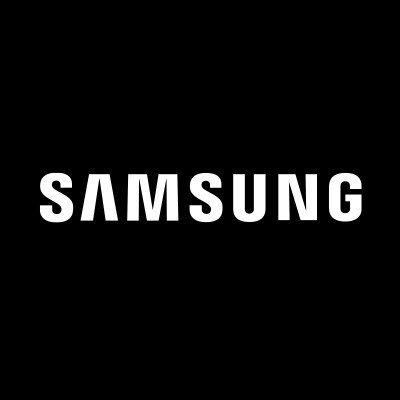Apple’s Foldable iPhone: A Leap into the Future or a Step Back?** **
July 25, 2024, 3:48 pm

Location: United States, California, San Francisco
Employees: 10001+
Founded date: 1938
Total raised: $6.4B
**
Apple is on the brink of a new chapter. The tech giant is reportedly working on a foldable iPhone, a device that could redefine its flagship product. This move comes after years of speculation and anticipation. The foldable iPhone, codenamed "V68," is expected to debut no sooner than 2026. But will it be a game-changer or just another gimmick?
The foldable phone market is heating up. Samsung has led the charge since 2019, introducing innovative designs that have captivated consumers. Apple, known for its meticulous approach, is now ready to join the fray. The company has begun discussions with suppliers about components for the foldable device. This is a significant step forward, moving from mere ideas to tangible plans.
The design of the foldable iPhone is expected to mimic the clamshell style of the Samsung Galaxy Z Flip. This means a compact device that unfolds into a larger screen. Apple aims to keep the device thin when closed, addressing one of the common complaints about foldable phones. The challenge lies in the screen crease. Apple’s designers are working hard to minimize this issue, ensuring a seamless user experience.
However, the road ahead is not without obstacles. Apple faces the daunting task of creating compelling features that will entice consumers. The foldable iPhone will likely come with a hefty price tag, making it crucial for Apple to justify the cost. The competition is fierce, with brands like Honor and Huawei gaining ground, especially in China. Apple must innovate to stay relevant.
In addition to the foldable iPhone, Apple is also focusing on its upcoming models. The iPhone 16 and iPhone 17 are in the pipeline, along with a refreshed iPhone SE. The iPhone SE, codenamed "V59," is set to ramp up production soon. This model aims to cater to budget-conscious consumers while still delivering quality.
The iPhone 16 lineup promises some exciting upgrades. A new internal graphite plate will help manage heat, addressing issues from previous models. Additionally, a new touch-sensitive button will allow users to control camera functions with ease. This feature aims to enhance the photography experience, a crucial selling point for modern smartphones.
Apple is also looking to improve battery replacement accessibility in its smaller iPhone 16 models. This move could make maintenance easier for users, a factor that often influences purchasing decisions. The entire iPhone 16 line is expected to include advanced optical zoom capabilities, previously reserved for higher-end models. This democratization of features could attract a broader audience.
The camera is a focal point for Apple. The upcoming models will introduce a mechanical aperture system, allowing users to control depth of field. This feature could elevate photography to new heights, giving users more creative control. It’s a nod to the growing importance of camera quality in smartphone purchases.
Despite these advancements, Apple’s recent focus has been on incremental improvements rather than radical innovations. The company has shifted its attention to new product categories, such as the Vision Pro headset. This strategy reflects a broader trend in the tech industry, where companies are exploring diverse avenues for growth.
The foldable iPhone represents a potential shift in this strategy. It could signal Apple’s return to bold hardware innovation. However, the company must tread carefully. The market is still maturing, and consumer preferences are evolving. A misstep could lead to disappointment.
As Apple navigates this new territory, it must consider the lessons learned from competitors. Samsung’s journey with foldable devices has been fraught with challenges. Early models faced durability issues and software glitches. Apple must ensure that its foldable iPhone is robust and reliable. Consumer trust is paramount.
The foldable smartphone market is growing rapidly. According to recent reports, it saw a 49% increase in the first quarter of 2024. This surge indicates a rising consumer interest in foldable technology. Apple’s entry into this space could further accelerate this trend. However, the company must deliver a product that meets high expectations.
In conclusion, Apple’s foray into the foldable smartphone market is a bold move. The foldable iPhone could redefine the brand’s identity and set new standards in the industry. Yet, it’s a double-edged sword. The stakes are high, and the competition is fierce. Apple must innovate while ensuring quality and reliability. The future is uncertain, but one thing is clear: the foldable iPhone could either be a monumental success or a cautionary tale. The world will be watching closely.
Apple is on the brink of a new chapter. The tech giant is reportedly working on a foldable iPhone, a device that could redefine its flagship product. This move comes after years of speculation and anticipation. The foldable iPhone, codenamed "V68," is expected to debut no sooner than 2026. But will it be a game-changer or just another gimmick?
The foldable phone market is heating up. Samsung has led the charge since 2019, introducing innovative designs that have captivated consumers. Apple, known for its meticulous approach, is now ready to join the fray. The company has begun discussions with suppliers about components for the foldable device. This is a significant step forward, moving from mere ideas to tangible plans.
The design of the foldable iPhone is expected to mimic the clamshell style of the Samsung Galaxy Z Flip. This means a compact device that unfolds into a larger screen. Apple aims to keep the device thin when closed, addressing one of the common complaints about foldable phones. The challenge lies in the screen crease. Apple’s designers are working hard to minimize this issue, ensuring a seamless user experience.
However, the road ahead is not without obstacles. Apple faces the daunting task of creating compelling features that will entice consumers. The foldable iPhone will likely come with a hefty price tag, making it crucial for Apple to justify the cost. The competition is fierce, with brands like Honor and Huawei gaining ground, especially in China. Apple must innovate to stay relevant.
In addition to the foldable iPhone, Apple is also focusing on its upcoming models. The iPhone 16 and iPhone 17 are in the pipeline, along with a refreshed iPhone SE. The iPhone SE, codenamed "V59," is set to ramp up production soon. This model aims to cater to budget-conscious consumers while still delivering quality.
The iPhone 16 lineup promises some exciting upgrades. A new internal graphite plate will help manage heat, addressing issues from previous models. Additionally, a new touch-sensitive button will allow users to control camera functions with ease. This feature aims to enhance the photography experience, a crucial selling point for modern smartphones.
Apple is also looking to improve battery replacement accessibility in its smaller iPhone 16 models. This move could make maintenance easier for users, a factor that often influences purchasing decisions. The entire iPhone 16 line is expected to include advanced optical zoom capabilities, previously reserved for higher-end models. This democratization of features could attract a broader audience.
The camera is a focal point for Apple. The upcoming models will introduce a mechanical aperture system, allowing users to control depth of field. This feature could elevate photography to new heights, giving users more creative control. It’s a nod to the growing importance of camera quality in smartphone purchases.
Despite these advancements, Apple’s recent focus has been on incremental improvements rather than radical innovations. The company has shifted its attention to new product categories, such as the Vision Pro headset. This strategy reflects a broader trend in the tech industry, where companies are exploring diverse avenues for growth.
The foldable iPhone represents a potential shift in this strategy. It could signal Apple’s return to bold hardware innovation. However, the company must tread carefully. The market is still maturing, and consumer preferences are evolving. A misstep could lead to disappointment.
As Apple navigates this new territory, it must consider the lessons learned from competitors. Samsung’s journey with foldable devices has been fraught with challenges. Early models faced durability issues and software glitches. Apple must ensure that its foldable iPhone is robust and reliable. Consumer trust is paramount.
The foldable smartphone market is growing rapidly. According to recent reports, it saw a 49% increase in the first quarter of 2024. This surge indicates a rising consumer interest in foldable technology. Apple’s entry into this space could further accelerate this trend. However, the company must deliver a product that meets high expectations.
In conclusion, Apple’s foray into the foldable smartphone market is a bold move. The foldable iPhone could redefine the brand’s identity and set new standards in the industry. Yet, it’s a double-edged sword. The stakes are high, and the competition is fierce. Apple must innovate while ensuring quality and reliability. The future is uncertain, but one thing is clear: the foldable iPhone could either be a monumental success or a cautionary tale. The world will be watching closely.
